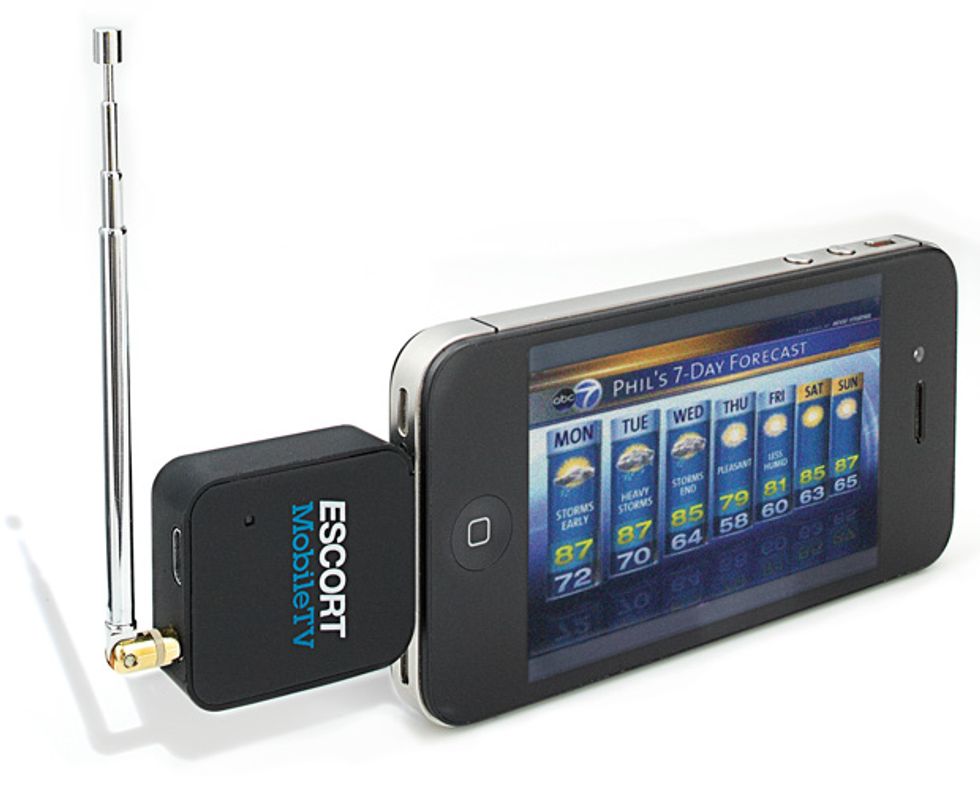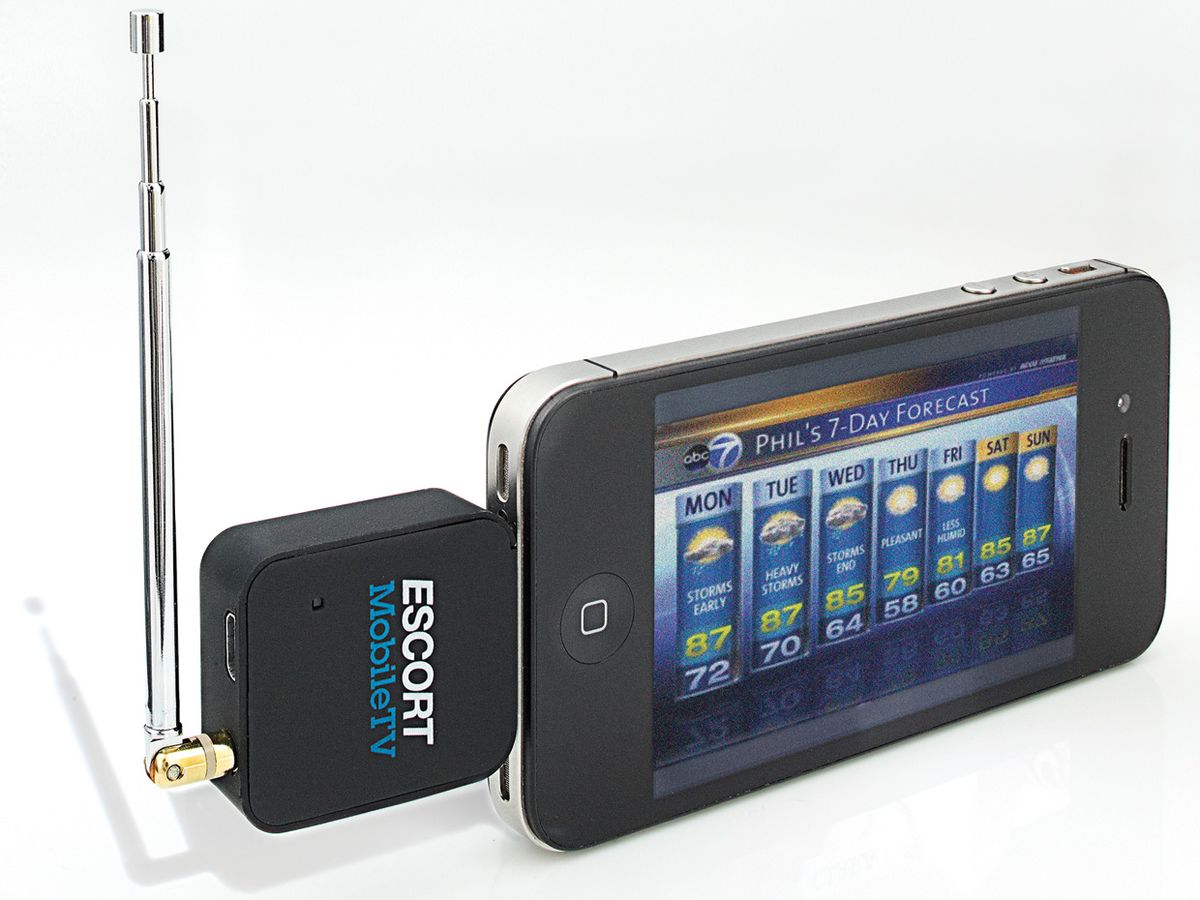
Even as more and more viewers shift to getting television programs delivered via fixed and mobile Internet connections, broadcast television still has its place. Over-the-air transmissions are more resilient than a video stream. There’s no network congestion or overwhelmed servers during a live event, for example, and when disasters rob cell towers or home routers of power, television stations can still reach affected areas. So it’s perhaps a little bit surprising that the options for watching broadcast TV on mobile devices have been thin on the ground, which makes gadgets like Escort’s MobileTV for iOS devices very welcome.
The dearth of such receivers is not for lack of effort: Televisions small enough to carry in your pocket have been around since the 1970s, but the early devices used miniaturized cathode ray tubes, which were pricey and power hungry. The proliferation of low-cost touch screens, powerful mobile processors, and digital TV broadcasts should have made things easy, but the original HDTV broadcast standards posed a problem.
Developed in the early to mid-’90s, these standards assumed that television sets would remain in one place when in use. Consequently, phenomena such as Doppler shifting of the broadcast signal can disrupt reception when the receiver moves around. In 2009, a mobile-friendly version [PDF] of the U.S. digital TV standard was released. However, deployment has been slow, because it requires equipment upgrades that many broadcasters were reluctant to make so soon after the major expense of switching from analog to digital transmissions. The upshot has been that current mobile TV solutions, such as those offered by Aereo, receive the broadcast signal with a fixed antenna and then relay that signal to users via cellular or Wi-Fi networks. The rollout of mobile-friendly digital TV is still a work in progress, but so far 42 cities now have at least one upgraded station.
Escort’s US $100 MobileTV is a matchbox-size unit that takes advantage of the new system. It plugs directly into iOS devices that use the original 30-pin connector socket; owners of iPhones and iPads with the new Lightning socket will have to use an adapter. It comes with a small telescoping antenna and a USB charging cable (the MobileTV has its own battery). Setup is a matter of downloading a free app and scanning for upgraded television stations; in the Boston area I’m able to pick up three. The app incorporates basic DVR functions, for example, allowing viewers to rewind live TV.
I tested the MobileTV during a train ride on the Acela Express service between Boston and New York City. This train can reach speeds of up to 240 kilometers per hour. Not surprisingly, reception suffered when the train went through culverts or tunnels, but it appeared unaffected by the movement of the train itself, with good picture and sound quality. The signals faded completely a little beyond 23 km from Boston’s city center. As there are no upgraded stations between Boston and New York, it wasn’t until I drew close to the Big Apple that I could begin to watch television again, this time about 50 km away from the city center.
For me, this device feels like the perfect addition to the “urban survival kit” I carry with me in my messenger bag—a multitool, an LED flashlight, and a battery-based USB charger—all of which I have found myself in need of on occasion while making my way around New York and Boston. The ability to watch broadcasts while out and about during times such as the aftermath of an explosion or power failure, instead of trying to glean information byte by byte via a smartphone browser, is an appealing one indeed.
This article originally appeared in print as “Mobile TV.”
